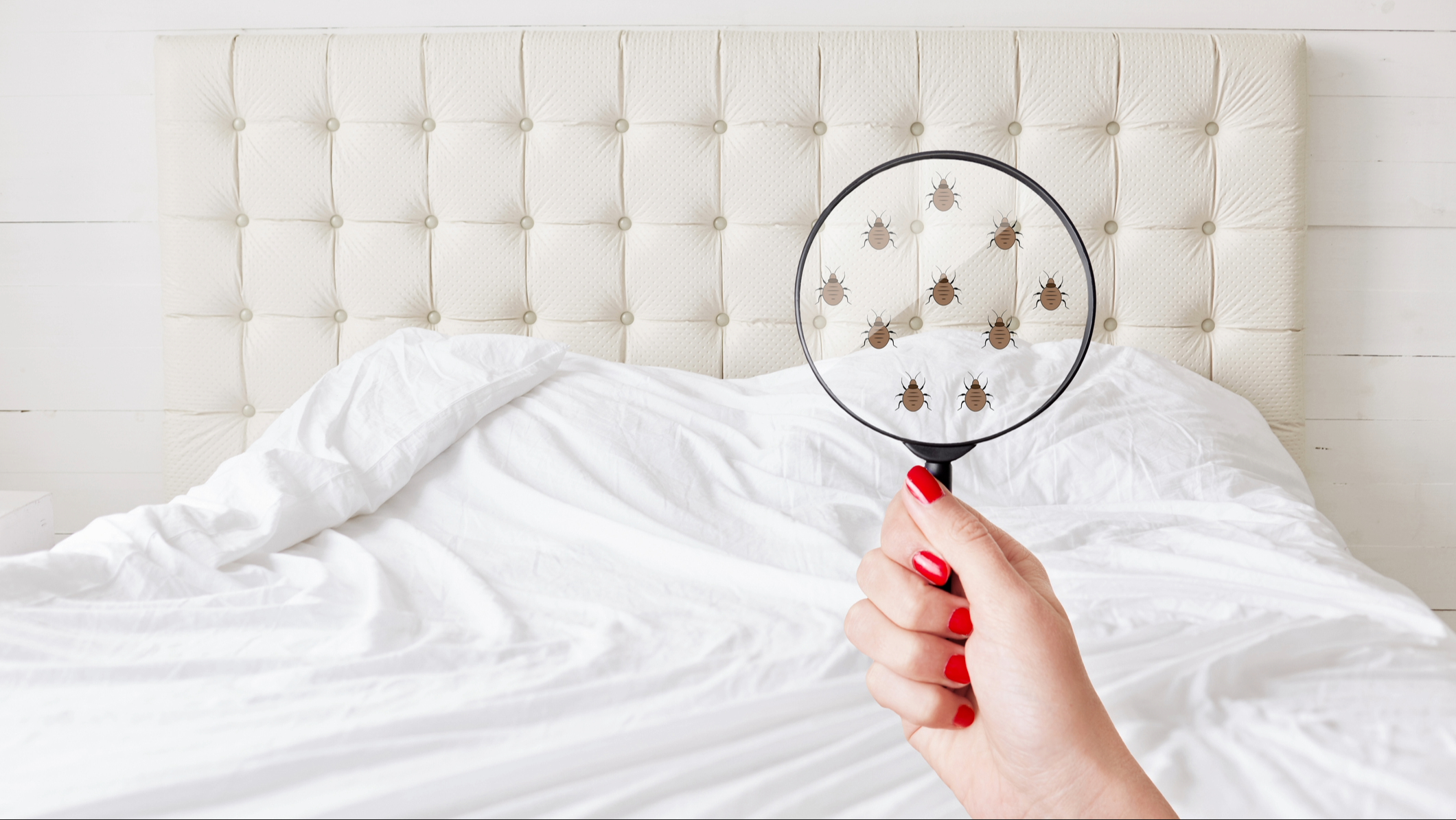
Waking up to your skin crawling with itchy bites is never nice, and certainly doesn’t lend itself to a calming sleeping environment. However, it’s not always obvious what bug is doing the damage. Which can leave us questioning what kind of pest is biting us in bed - bed bugs or fleas?
Even the best mattresses of 2024 with the latest in hypoallergenic technology can fall foul to a pest infestation. Bed bugs and fleas are two of the most common pests and they can be difficult to tell apart. Both are similar in appearance and have a nasty habit of dwelling in your mattress, biting you at night, and leaving specks of faeces on your bed sheets.
However, the two are ultimately very different. Once you understand the basics of how to recognize each one, you should be able to determine what’s living in your bed and take the right steps to get rid of them as soon as possible. Of course, if you would prefer to replace your mattress entirely, the upcoming Labor Day mattress sales are a great time to buy a new bed.
But first, let's compare bites, symptoms, and signs before offering our top tips on how to get rid of the bugs biting you in bed.
Common signs of bed bugs: Bites and symptoms
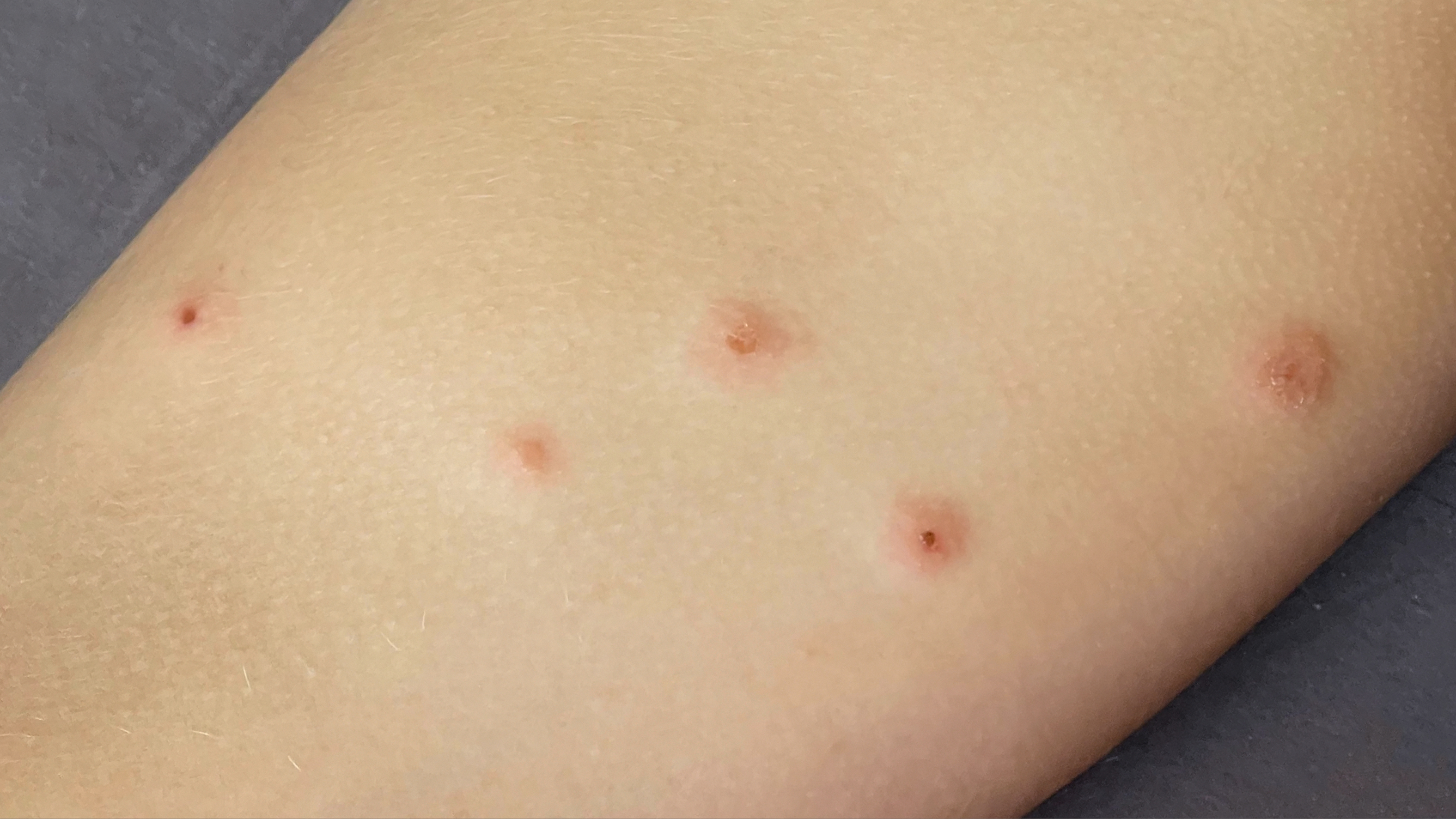
To determine whether you have bed bugs or fleas in your home, recognizing the early signs of each is essential.
There are some telltale signs that bed bugs are living in your mattress. Most people first start to suspect an infestation after finding bites on their skin. These bites usually appear in lines or clusters on your arms, hands, face, and shoulders, and can sometimes even follow the lines of your pyjamas. Bites will also often have a dark centre or appear as a discoloured bump, and can sometimes be itchy.
Once you suspect bed bugs, you can start looking for other commons signs, like:
- Small specks of blood on bedding and mattress: It’s likely you’ll scratch your irritated skin in the night, causing it to bleed. Your tossing and turning can also squash the bed bugs, leaving small spots of blood in their place.
- Spots of faeces: The reality of having an infestation of bugs is also having a large amount of their faeces on your bed, bedding, and other furniture. This will appear as very small dark spots, either brown or black.
- Eggs and eggshells: Very small white or cream eggs can sometimes be noticeable, as well as the casings and eggshells left behind after the bugs have hatched.
- Sweet, musty smell: If you’ve got a particularly large infestation, you may be able to smell a sweet, musty odour, thanks to bed bugs’ pheromones.
Common signs of fleas: Bites and symptoms
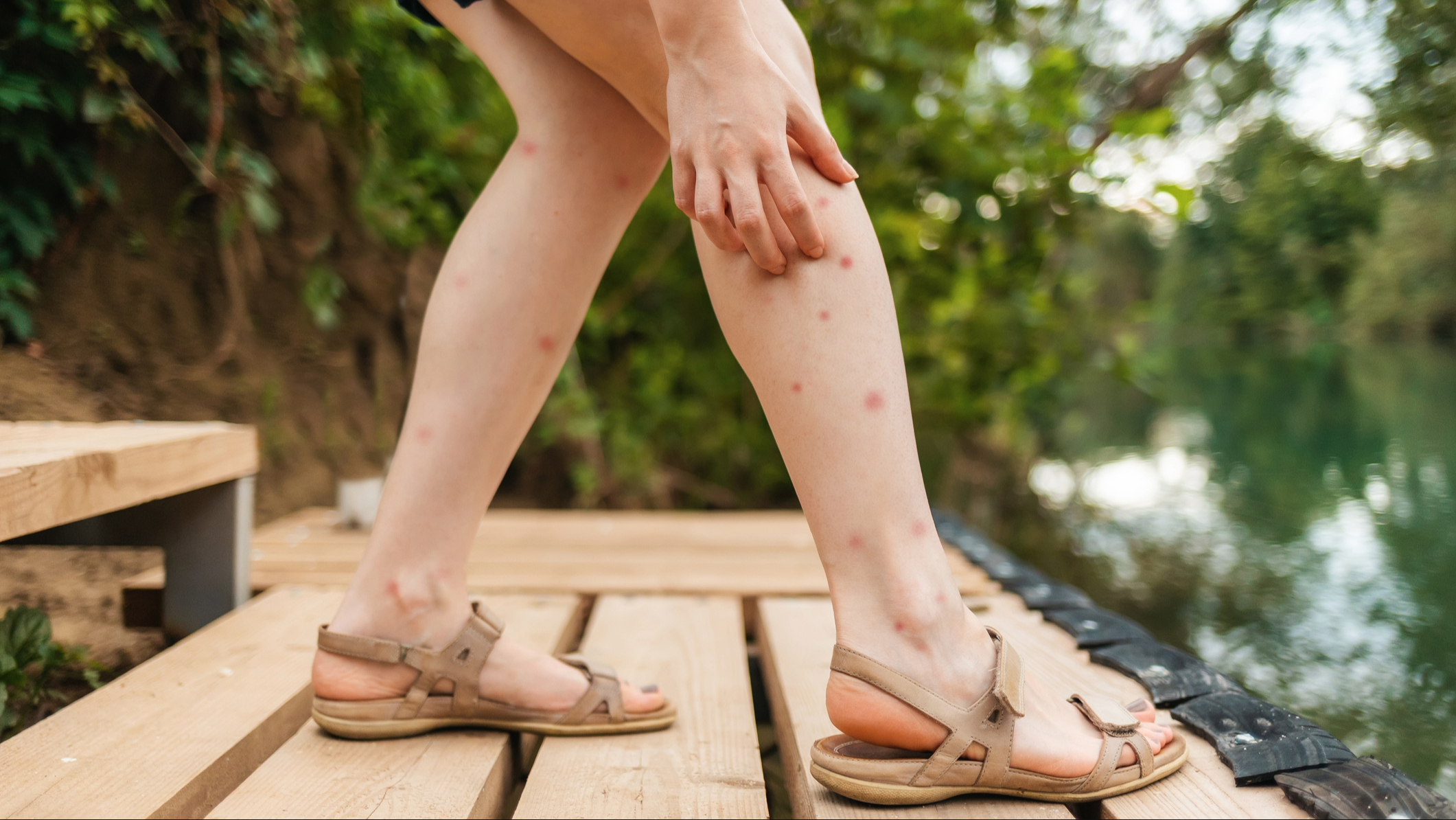
Frustratingly, the signs of fleas are very similar to those of bed bugs. However, there are a few key differences that can help tell the two apart.
Firstly, flea bites, while they can look a lot like bed bug bites, will often be focused on your legs, ankles, and feet, rather than your arms, shoulders, and neck. Flea bites are also extremely itchy, whereas bed bugs will only irritate some people’s skin.
Also, while fleas can be found in beds and mattresses, they are more likely to be elsewhere in your home, meaning you can get bitten throughout the day, rather than just at night. Other key signs of fleas that can help you tell them apart from bed bugs include:
- Your pet is suffering too: If you have a furry friend that’s scratching constantly, acting irritable, and losing hair, it’s likely they are suffering from fleas.
- Flea dirt: It’s common to see black specks of droppings which are actually digested blood from the flea.
- Seeing fleas jumping: Despite fleas being just as small as bed bugs, their constant jumping means they are often more visible. Look out for tiny bugs jumping on your furniture and on your carpet.
Bed bugs or fleas: What do they look like?
It can be helpful to know what bed bugs look like, because sometimes, depending on the severity of your infestation, you’ll be able to spot the critters in your bed. Common bed bugs often have the following characteristics:
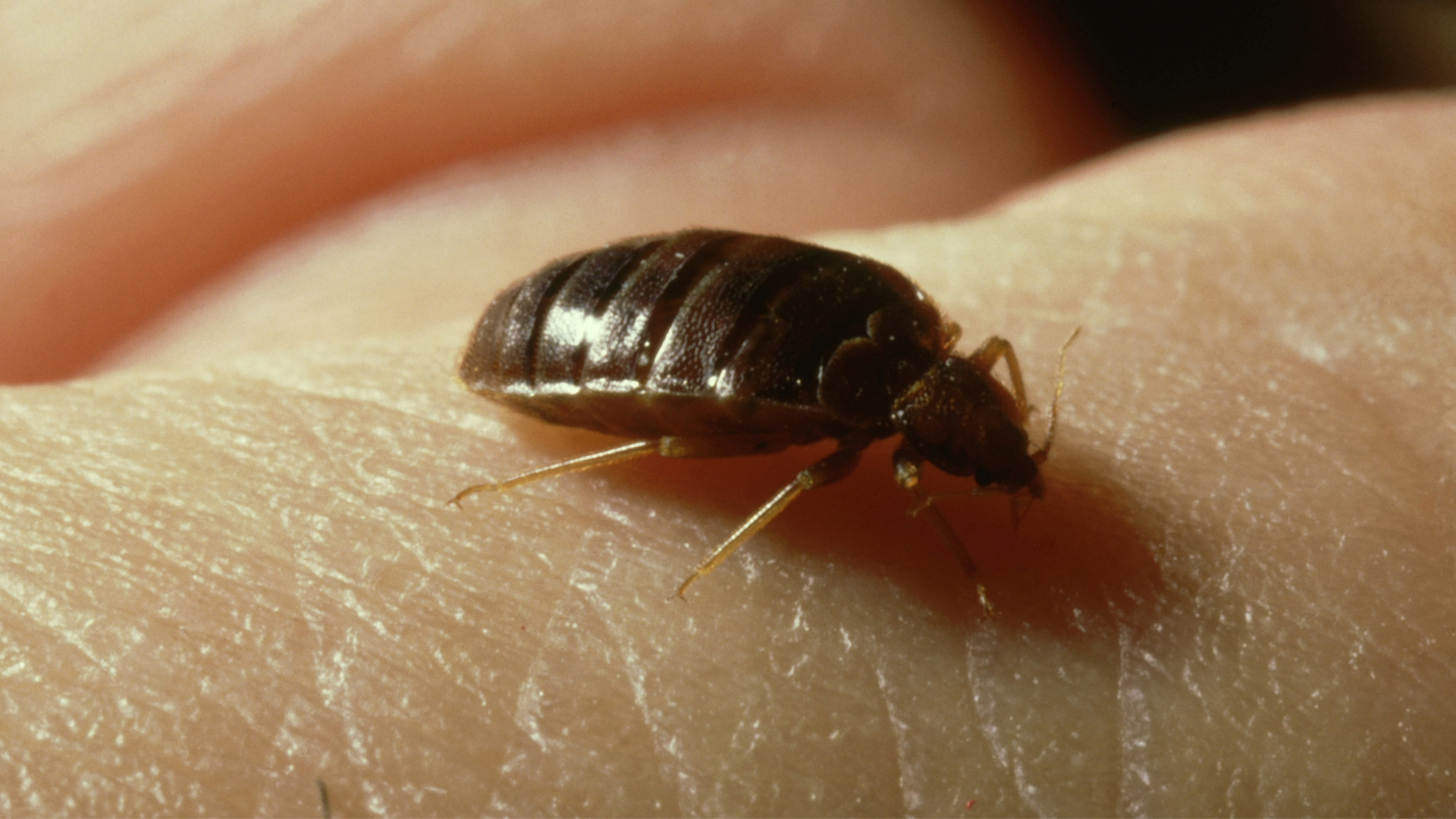
- Around 5mm big
- Flat and oval bodies
- Brown, red, or yellow in colour
- 6 legs and 2 antennae
Adult bugs can be seen by the naked eye, but young bugs who haven’t fed in a while can be nearly impossible to spot, thanks to their translucent appearance.
Fleas are smaller than bed bugs, so can sometimes be more difficult to spot if they’re not jumping. They have a slightly different shape, with a longer, thinner body compared to the more round, oval shape of bed bugs. When trying to identify fleas, look out for the following characteristics:
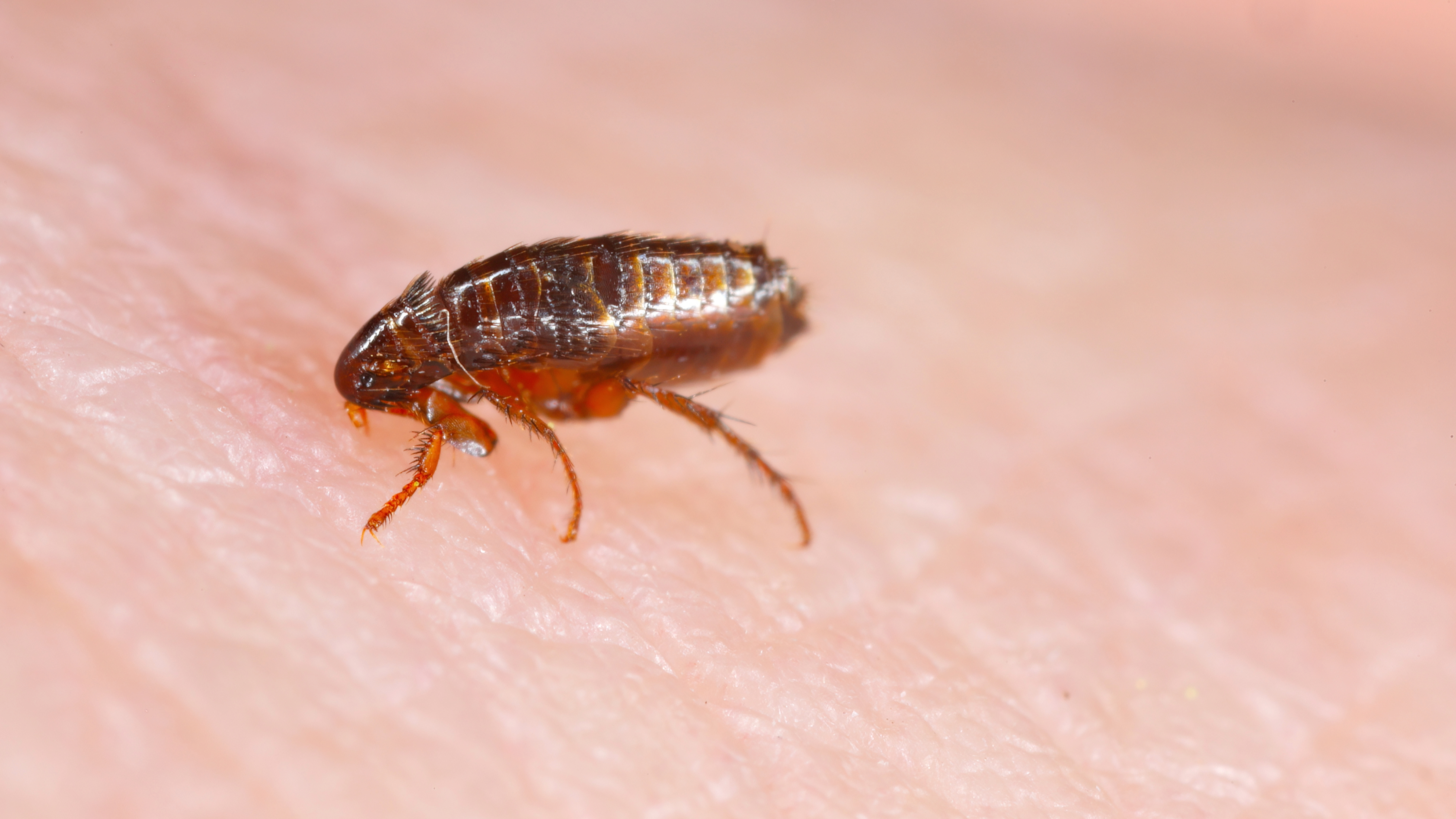
- Around 1-2mm long
- Very dark brown or red in colour
- Long and flat bodies
- Jumping high distances
Because of how small fleas are, it’s unlikely you’ll spot them until the infestation has become severe. It can be easier to spot eggs and dirt and use that as an indicator of fleas.
Bed bugs or fleas: Where do they come from and where do they live?
Some homes will be more at risk from bed bugs or fleas than others, mainly because of how these pests travel and where they come from.
Bed bugs usually travel on second-hand furniture, between rooms at hotels, and on luggage and backpacks. This means if you’ve recently travelled, stayed at hotels or other people’s houses, you may notice the common signs of bed bugs a couple of weeks after you get home.
However, fleas are more likely to have come from pets, and people visiting your home who have pets. Sometimes, they can enter your home without a host, through cracks in floorboards and windows. If you have an overgrown, damp garden that’s frequently visited by wild animals, it may be the perfect breeding ground for fleas.
Can fleas live in mattresses and bedding?
It’s common knowledge that bed bugs can live in your mattresses, bedding, and pillows. But what about fleas? While they don’t usually live and thrive in mattresses, like bed bugs, they can burrow into fabric and stay there for a while.
This is particularly common if your pet sleeps in your bed with you. The fleas can fall off your pet and transfer to your bedding, where they can bite you during the night instead of living on a host.
Pillows, mattresses, and bedding can be home to eggs and larvae. When the fleas hatch, they will seek a host, rather than staying in your bed. So, while an infestation is unlikely to be focused on your bed, without regular washing and good hygiene mattresses can be a key space for fleas to multiply.
How to get rid of bed bugs — a 3 step guide
If you’ve identified a bed bug infestation, it’s important to act quickly. They can multiply quickly, laying 1-2 eggs a day, so without adequate control your home can quickly become overrun. Follow these steps to get rid of bed bugs fast.
Step 1. Vacuum bed and bedding
First things first, vacuum everything. This includes:
- Mattresses
- Bedding
- Sofas
- Chairs
- Carpets
- Rugs
- Inside wardrobes and drawers
Don’t just focus on one room. The likelihood is that your bed bugs have travelled around the house, so work methodically room by room. When you have hoovered, throw away the dust bag into a tied plastic bag, and then take it to outdoor bins.
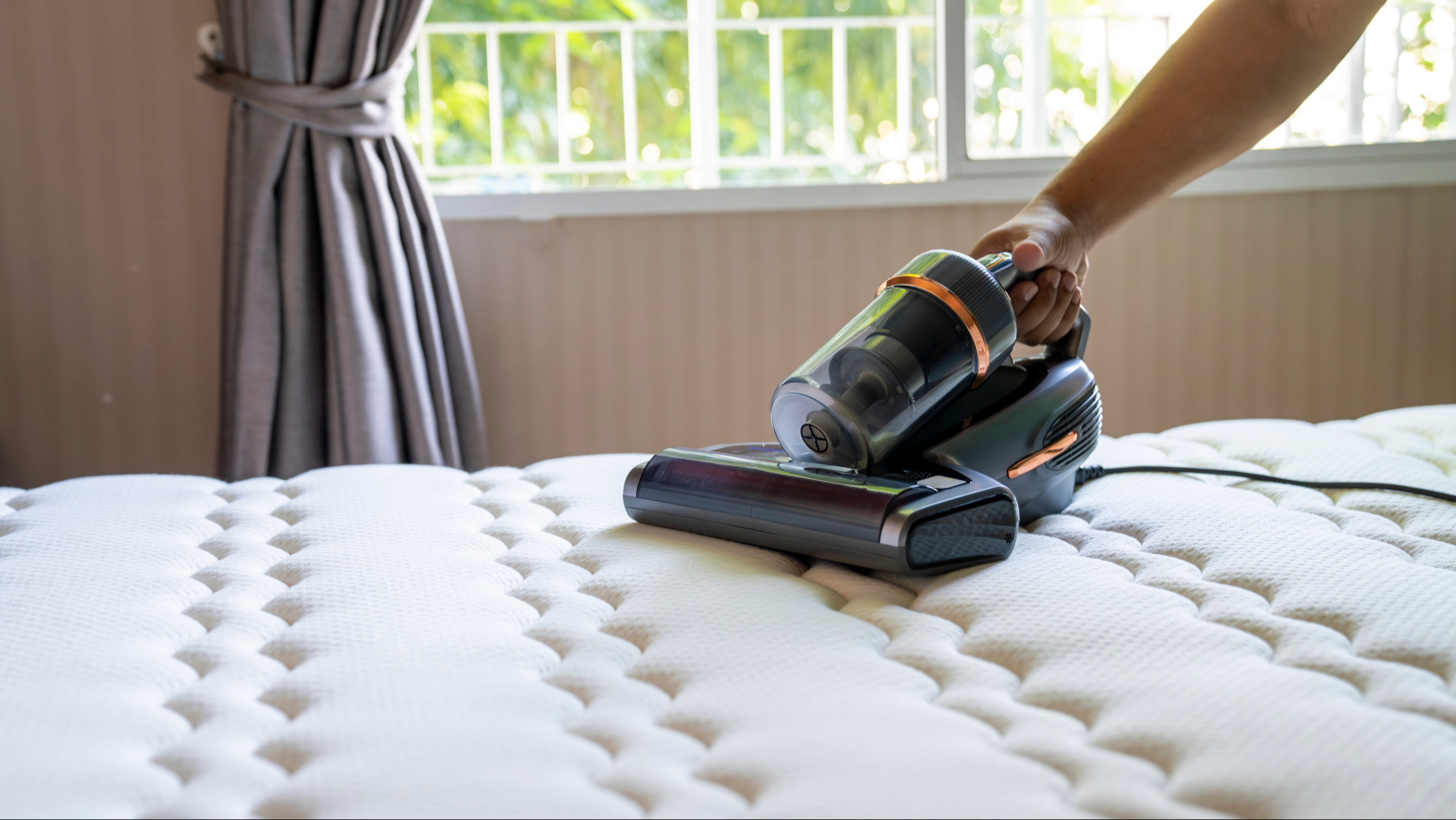
Step 2. Wash clothing, bedding, and upholstery
Next, gather up all of your clothes, bedding, and upholstery you can remove from your furniture and wash it at the highest temperature possible. This will kill any remaining bed bugs.
Be sure to dry your clothes on a heat cycle, rather than hanging them up to dry, as they can quickly attract any bed bugs that are still alive. Make sure you wash:
- Pillow cases
- Duvet covers
- Pillows and cushions
- Soft toys
- Duvets
- Blankets
You can also try mattress cleaning with essential oils to kill any remaining bed bugs and prevent them from coming back.
Step 3. Kill remaining bugs and eggs
Despite doing all you can, it’s likely there are still bed bugs and unhatched eggs hanging around your home.
For a severe infestation, you can opt for chemical options, like bug bombs and sprays. A popular option is the Harris Bed Bug Killer, which costs $22 at Amazon). If you choose these options, ensure you follow all of the safety precautions and instructions, as the chemicals used can be very strong.
Be aware that there is a possibility you will have to vacate your home during this process. If you don’t feel comfortable administering the chemicals, then it’s definitely worth calling in a professional to help.
If you’d prefer something a little less strong, you can use steam cleaning equipment, which can be just as effective. If you don’t own a steamer, we recommend the Dupray Neat Steam Cleaner, which costs $149 at Amazon).
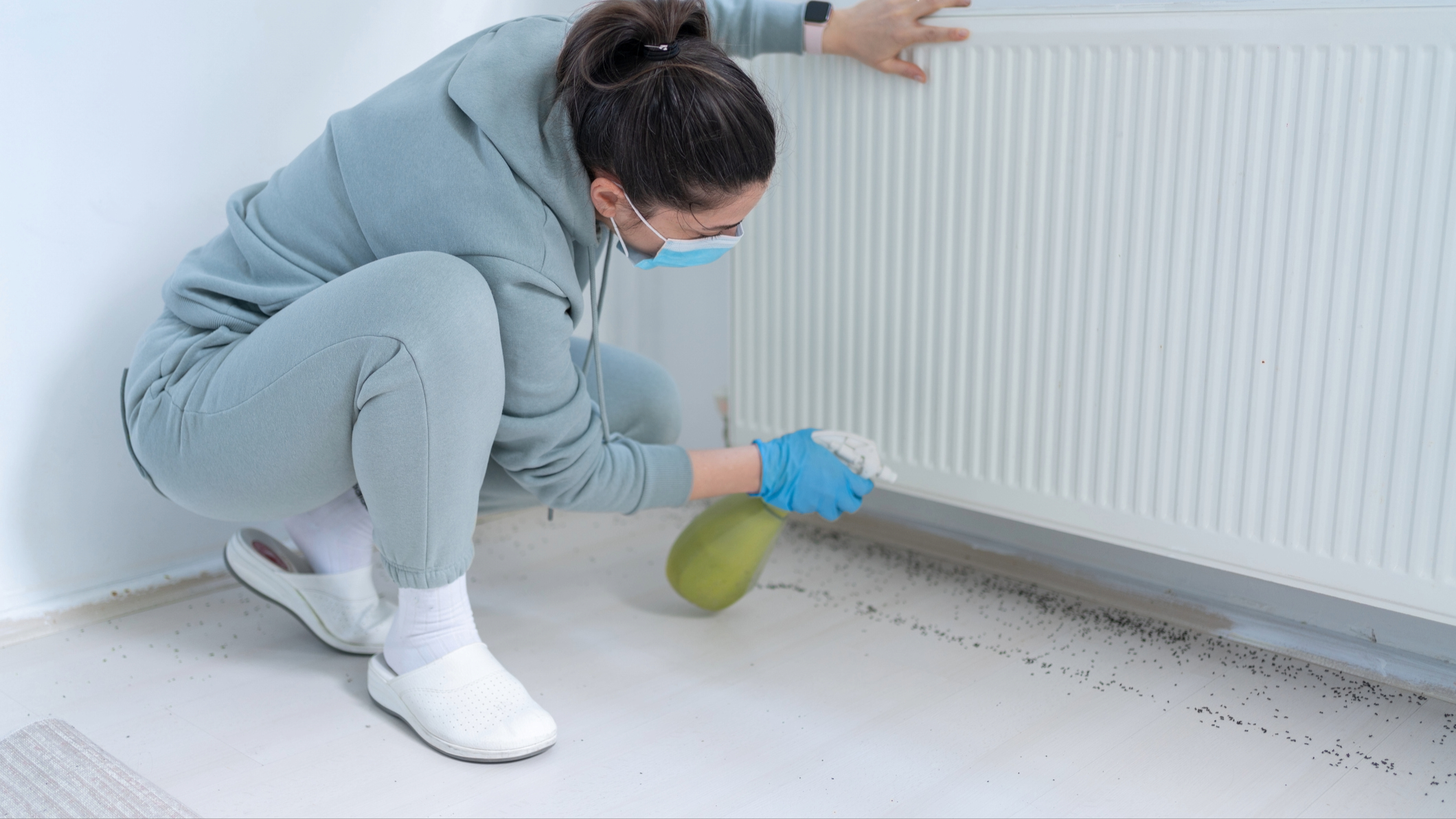
How to get rid of fleas — a 3 step guide
It’s considered to be a little easier to get rid of fleas compared to bed bugs. However, after treating a flea infestation, it’s common for them to come back multiple times during the year. Take the following steps to kill fleas in your home.
Step 1. Flea treat your pets
Pets are usually the main culprit for a flea infestation, so it’s the first place you should start. You can identify fleas by examining your pet’s fur and skin, looking for eggs, dirt, and the fleas themselves.
Flea treatment is usually pretty straight forward and can be as simple as putting a spot of gel on your pet’s neck. However, this does depend on the severity of the case.
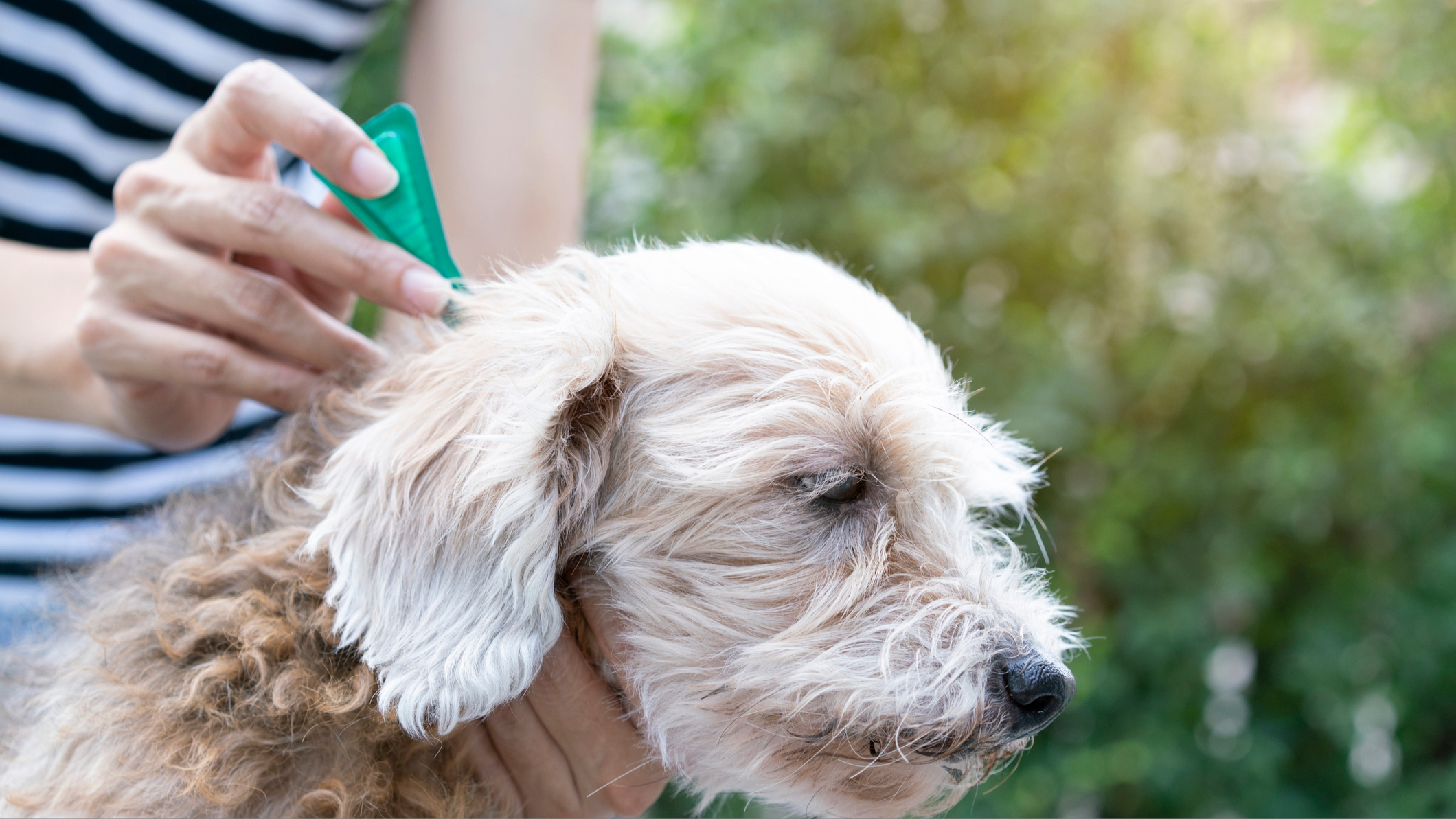
Step 2. Vacuum and steam clean
Similarly to bed bugs, vacuuming and steam cleaning your mattress, bedding, carpets, rugs, and upholstery can kill the majority of the fleas in the house.
Doing this regularly for a few days will help you kill as many eggs and fleas as possible, preventing them from multiplying.
Step 3. Wash bedding and upholstery
Washing all bedding, pillows, blankets, and upholstery on a high temperature can help kill any remaining fleas and eggs. Dry them on a heat cycle, rather than hanging them up, to ensure they don’t get infested again.
Similarly to bed bugs, if you do have a severe infestation, you may need to resort to chemical sprays and bombs. However, you can usually avoid this with fleas, by keeping your home clean and staying on top of preventative methods like:
- Regularly checking and combing your pet for fleas
- Regular vacuuming
- Maintaining back and front yards so they don’t become a breeding ground for fleas
- Not letting pets on the bed
Can mattress protectors prevent pests?
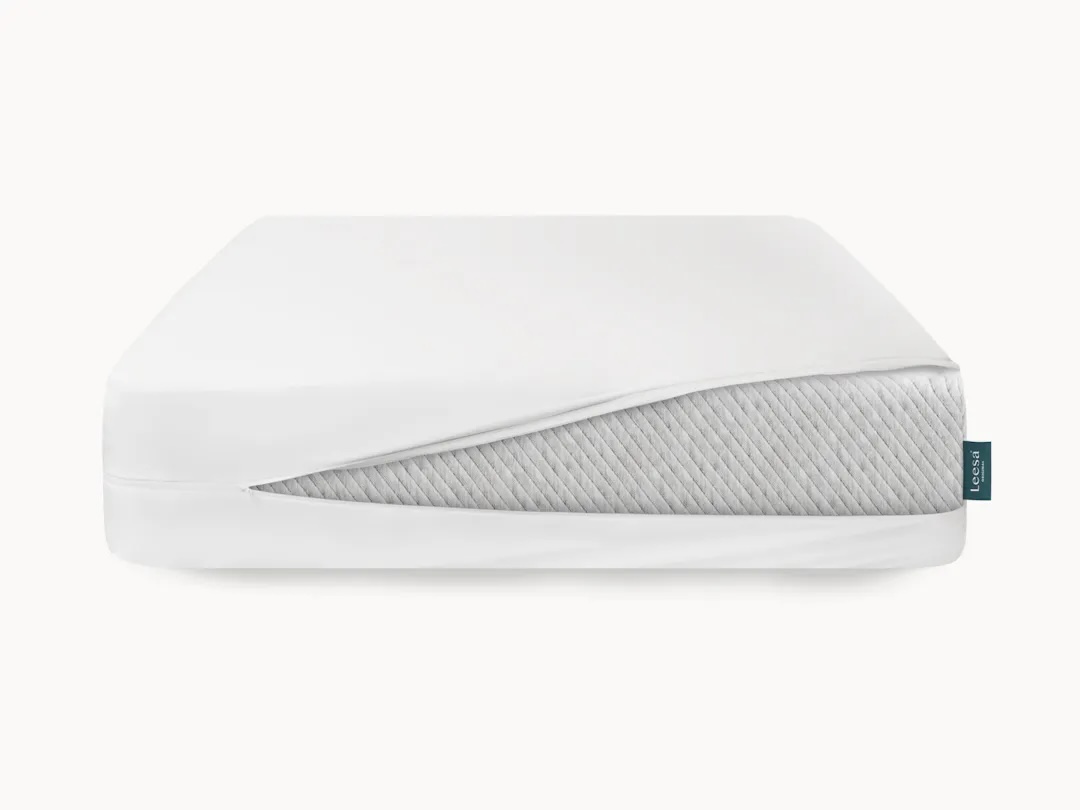
Yes, a decent mattress protector can protect your mattress against pests like bed bugs and fleas. But it's important you pick the right one. Fully zippered mattress encasements are a great option to offer you an extra layer of safety between you and your mattress. They are a thick fabric that encase your mattress entirely. While they are mostly known for protecting against spills and body oils, they can also help protect you from bed bugs and fleas.
A fully zippered encasement can be a little trickier to take off and wash, but they are the only form of mattress protector that are effective at keeping beds and fleas firmly locked out, thanks to their six-sided protection. We recommend the queen size Leesa mattress encasement for $100 at Leesa. Brooklyn Bedding also have a hypoallergenic queen size encasement which is now only $109 (was $137) at Brooklyn Bedding.







